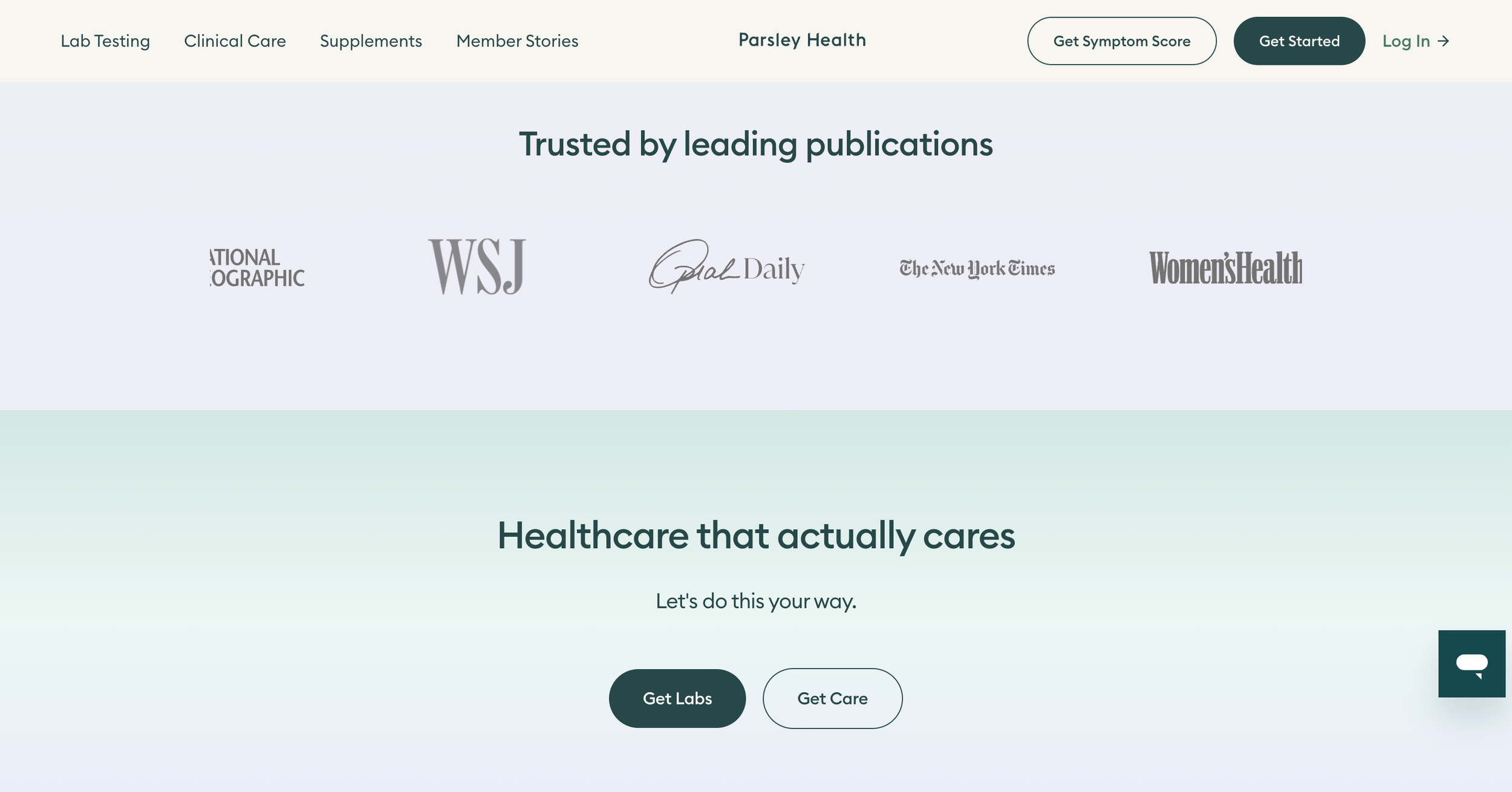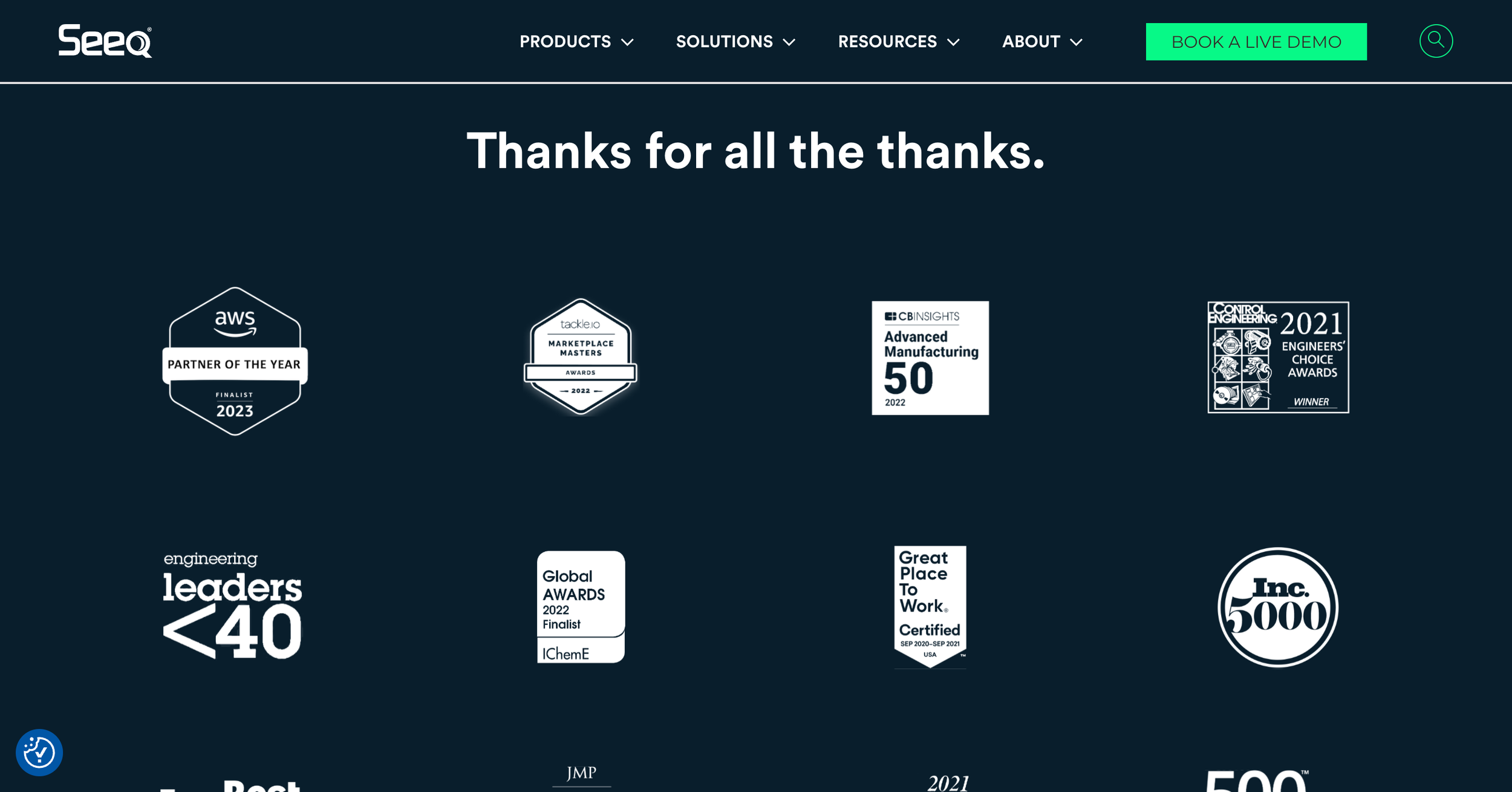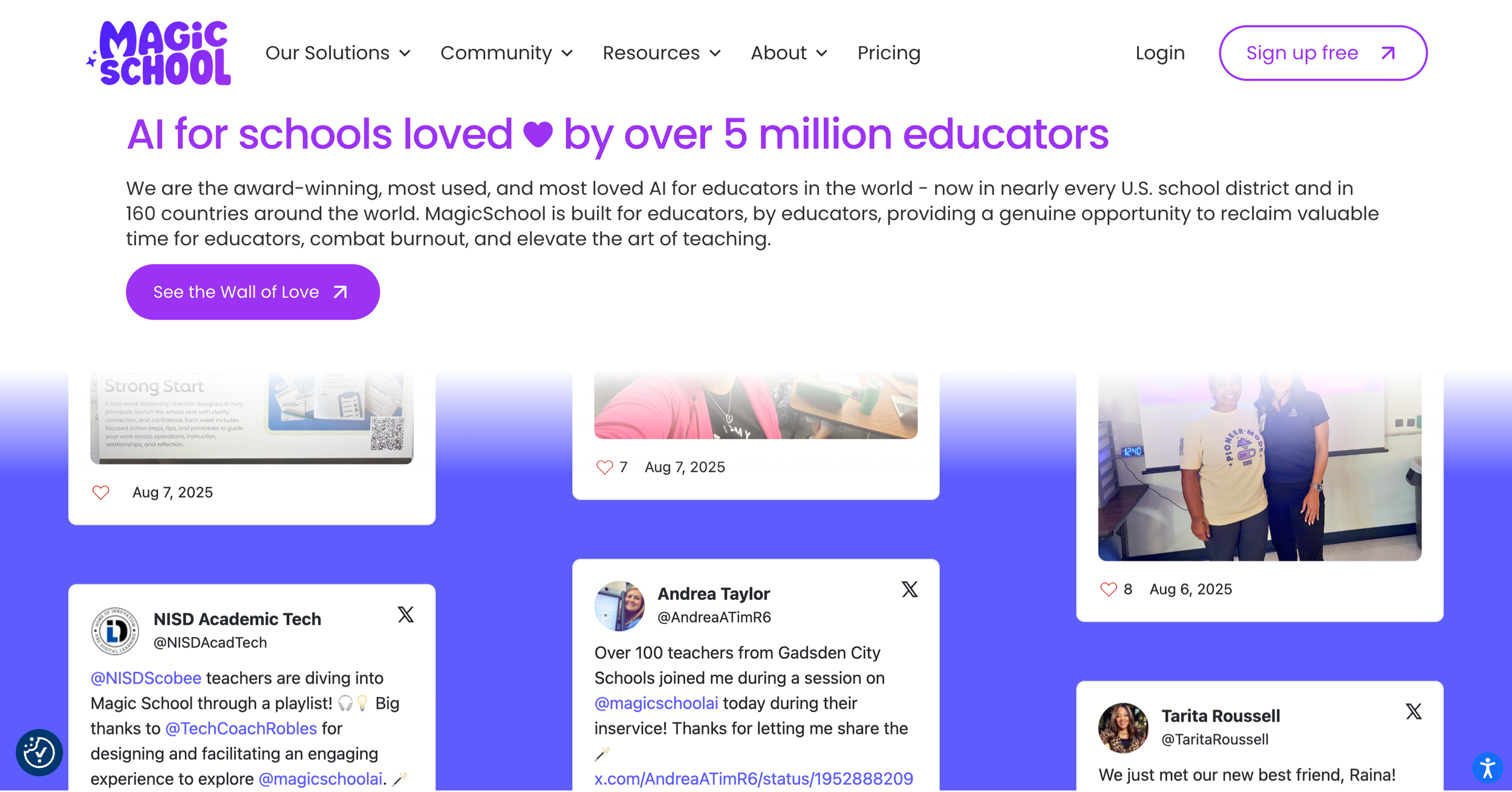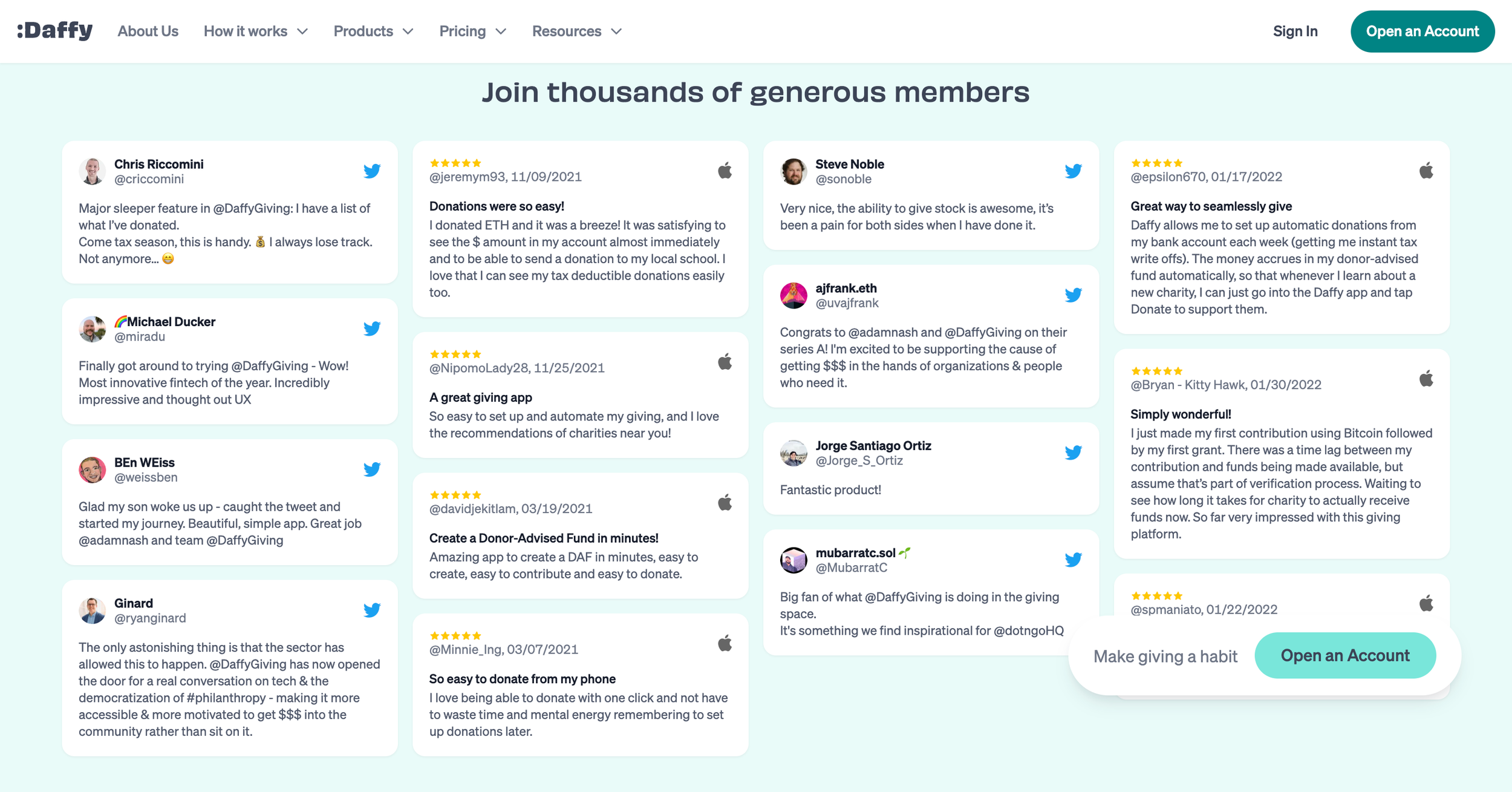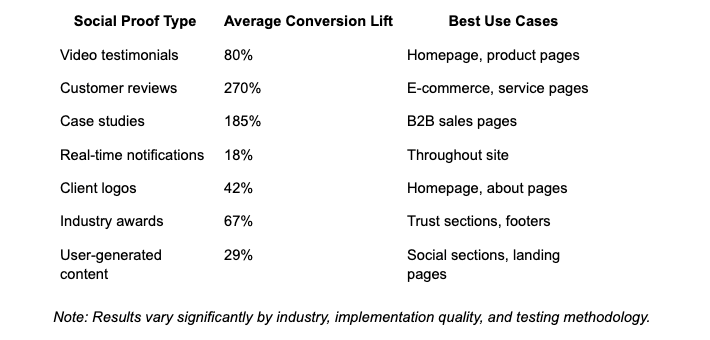12 Ways to Add Social Proof on Your Startup Homepage
Your potential customers spend exactly 0.05 seconds forming an opinion about your startup. That's faster than a blink. And in that split second, they're making a fundamental decision about whether you're worth their time, trust, or money.
But it's not just your sleek design and clever copy doing the heavy lifting. It's something far more primal: the evidence that other humans have already taken the leap before them.
✨ Social proof ✨
Read on to snag my 12 best ways to add social proof to your startup homepage ⬇️
Why social proof works (and why startups need it most)
93% of consumers say online reviews impact their purchase decisions, and consistent social proof can increase revenue by 62% per customer.
But why does social proof work so darn well?
Informational social influence explains it. When people face uncertainty (hello, every visitor to your startup homepage), their brains take a shortcut. Instead of processing endless information, they look for social cues from others who've already made the decision.
Pages featuring testimonials convert 34% better than those without, whilst displaying reviews can increase conversion rates by up to 270%. For startups, this represents a competitive advantage that costs nothing but delivers everything.
The psychological triggers work on multiple levels:
Uncertainty reduction: New brands trigger scepticism. Social proof neutralises doubt
Risk mitigation: Seeing others succeed reduces perceived risk of trying something new
Authority transfer: Borrowing credibility from respected sources or customers
FOMO activation: 56% of American social media users feel FOMO, and social proof triggers this perfectly
The startup-specific social proof challenge (and how to solve it)
Generic social proof advice falls apart when you're a startup. You don't have 10,000 customers or Fortune 500 clients. You might not even have testimonials yet.
But early-stage social proof can be more powerful than established brand proof because it feels more authentic and relatable. ⬇️
Start with what you have:
Beta testers and early adopters
Industry connections and advisors
Personal networks and colleagues
Relevant certifications or credentials
Media coverage, however small
Social media engagement metrics
Partnership announcements
Build what you need:
Proactive testimonial collection process
Case study documentation system
Social media content strategy
Press outreach programme
Community building initiatives
The key is treating social proof as a process, not a destination. Every interaction is an opportunity to generate future proof.
The 12 ways to add social proof that actually convert visitors
1. Strategic customer testimonials
Generic testimonials are the quinoa of social proof – technically nutritious but hardly compelling. The ones that convert share three characteristics: specificity, emotion, and credibility.
The anatomy of conversion-driving testimonials:
Specific outcomes: "Reduced customer support tickets by 47% in three months"
Emotional resonance: "Finally, I could sleep at night knowing our customer data was secure"
Credible attribution: Full name, job title, company, photo (where possible)
💡 68% of consumers trust a brand more when there's a mix of both positive and negative reviews visible. Include testimonials that acknowledge challenges alongside benefits. "The learning curve was steep initially, but the results speak for themselves" builds more trust than pure praise.
Where to place them:
Near primary call-to-action buttons
On pricing pages to justify value
In popup exit-intent campaigns
Adjacent to product feature descriptions
2. Client logo walls (borrowing credibility)
That row of client logos isn't just name-dropping, it's true credibility arbitrage. You're borrowing trust from brands your visitors already respect.
The strategy for client logo walls:
Quality beats quantity every time
Mix recognisable brands with impressive but lesser-known ones
Update regularly to show momentum
Group by industry or use case where relevant
Visual best practices:
Consistent sizing and styling (greyscale works brilliantly)
Responsive design for mobile viewing
Progressive disclosure for extensive lists
Link to case studies where possible
Companies like Databox display their customer logo section alongside ratings from Capterra and G2, creating immediate scale validation.
3. Real-time activity notifications
These subtle popups showing recent purchases, sign-ups, or downloads tap directly into our fear of missing out. Recent booking social proof widgets have been shown to increase conversions by 18%.
Technical implementation considerations:
Genuine real-time data (never fake it)
Mobile-responsive design
Appropriate timing and frequency
Geographic relevance where possible
Privacy compliance (especially GDPR)
Tools to consider: WiserNotify, TrustPulse, Proof, Fomo
4. Industry awards and certifications
External recognition carries disproportionate weight because it comes from sources without commercial bias. 75% of B2B buyers consider industry awards a key part of their purchase decision.
Types of external validation:
Industry awards and recognition
Security certifications (ISO 27001, SOC 2)
Professional accreditations
Compliance badges (GDPR, HIPAA)
Partner programme badges
Media mentions and features
Display strategy:
Create a dedicated "trust section" on your homepage
Include relevant badges near related features
Link to verification pages where possible
Refresh and update regularly
5. User-generated content from social media
Screenshots of customers posting about your product on social media represent the holy grail of social proof. 79% of people say user-generated content highly impacts their purchase decisions, and “ehigher web conversion rate.
UGC collection strategies:
Branded hashtag campaigns
Customer photo contests
Social media monitoring and curation
Feature request and feedback loops
User community building
Implementation tips:
Always request permission before featuring content
Include source attribution
Mix content types (photos, videos, tweets, LinkedIn posts)
Rotate content regularly to maintain freshness
6. Case studies with concrete metrics
While testimonials tell stories, case studies prove results. They're particularly powerful for B2B startups where buying cycles involve multiple stakeholders.
The winning case study formula:
Challenge: Specific problem the customer faced
Solution: How your product addressed it
Implementation: What the process looked like
Results: Quantified outcomes with timeframes
Quote: Customer voice validating the success
Which metrics to choose from:
Revenue impact: "25% increase in monthly recurring revenue"
Efficiency gains: "Reduced report generation time from 4 hours to 12 minutes"
Cost savings: "Cut customer acquisition cost by £127 per customer"
Time benefits: "Launched new campaigns 3x faster"
SEO bonus: Case studies create valuable long-tail keyword opportunities and demonstrate expertise for search engines.
7. Media mentions and press coverage
Being featured in respected publications creates a halo effect that extends credibility across your entire brand.
Types of media coverage:
Industry publication features
Podcast guest appearances
Conference speaking slots
Expert commentary in news articles
Product reviews and comparisons
Startup directory listings
Presentation strategies:
Feature logos prominently on homepage
Create a dedicated "Press" or "In the Media" page
Include quotes or headlines, not just logos
Link to original coverage where possible
Mention recent coverage in email signatures
8. Customer count and usage statistics
Numbers create immediate credibility around your traction and momentum. Companies like Jasper showcase the power of their community with 100,000+ users, providing evidence of platform success.
Powerful metrics to highlight:
Total customers or users
Monthly/daily active users
Transactions processed
Data points analysed
Time saved collectively
Revenue generated for customers
Display best practices:
Use round numbers for impact ("50,000+" not "47,842")
Include growth indicators where impressive
Update regularly to show momentum
Choose metrics that impress your specific audience
⚠️ Only highlight numbers that genuinely impress. Low numbers can backfire spectacularly.
9. Video testimonials
Replacing landing page reviews with video testimonials can increase conversion rates by 80%, and 77% of people who have seen a video testimonial say it motivated them to make a purchase.
Why video testimonials work:
Harder to fake than text
Emotional nuance through facial expressions and tone
Higher engagement than static content
Builds stronger personal connection
Production guidelines:
Keep videos 60-90 seconds maximum
Focus on outcomes rather than features
Ensure excellent audio quality
Include captions for accessibility
Optimise for mobile viewing
Collection strategies:
Offer incentives for participation
Provide question templates
Use simple recording tools (Loom, Zoom)
Schedule dedicated testimonial calls
Leverage customer success touchpoints
10. Social media social proof
Your social media following and engagement levels serve as immediate credibility indicators.
Powerful metrics to highlight:
Follower counts (where impressive)
Engagement rates and interactions
Community size and activity
Social mentions and shares
LinkedIn company page followers
YouTube subscriber counts
Implementation tactics:
Embed live social feeds
Display follower counts prominently
Showcase high-engagement posts
Feature social media testimonials
Include social share buttons with counts
11. Partnership announcements
Strategic partnerships with established companies provide instant credibility transfer.
Types of partnerships to highlight:
Technology integrations
Channel partnerships
Strategic alliances
Investor relationships
Advisory board members
Supplier partnerships
Presentation approaches:
Dedicated partnership page
Homepage partner logos section
Integration marketplace listings
Joint press releases
Co-marketing content
12. Security and compliance badges (trust signals)
For startups handling sensitive data, security and compliance badges remove major purchasing barriers.
Essential trust badges:
SSL certificates
Payment security (PCI DSS)
Data protection compliance (GDPR, CCPA)
Industry standards (SOC 2, ISO 27001)
Privacy certifications
Vulnerability assessments
💡 These badges are particularly crucial for checkout processes, contact forms, and anywhere sensitive information is collected.
Technical implementation: how to make social proof mobile-first
Mobile-responsive design is crucial – if visitors click on your landing page from their smartphone and encounter a messy design, they will likely hit the back button immediately.
Mobile optimisation checklist
Layout considerations:
Stack elements vertically on smaller screens
Ensure touch-friendly interaction areas
Optimise image sizes for faster loading
Use progressive disclosure for long lists
Test on actual devices, not just browser simulation
Performance optimisation:
Lazy load social proof elements
Compress images without quality loss
Implement responsive image serving
Minimise HTTP requests
Use modern image formats (WebP, AVIF)
User experience priorities:
Place most compelling proof above the fold
Ensure readability without zooming
Make testimonial photos optional on mobile
Simplify complex social proof for small screens
Maintain visual hierarchy across devices
Conversion rate benchmarks by social proof type
Building your social proof collection system
The difference between startups that struggle with social proof and those that thrive lies in having a system. ⬇️
Creating automated collection workflows
The most effective social proof collection happens automatically at key customer touchpoints.
Post-purchase
Post-purchase follow-up sequences represent your golden opportunity – customers have just experienced the value of your product and emotions are running high.
Design email sequences that trigger 24-48 hours after purchase, when satisfaction peaks but the experience remains fresh in memory.
Milestone achievements
Milestone achievements offer another powerful collection moment. When customers hit meaningful benchmarks – completing onboarding, reaching usage targets, or achieving specific outcomes with your product – they're naturally inclined to share their success.
Integrate these triggers directly into your product, automatically prompting for feedback when customers cross these thresholds.
Renewal and upgrade moment
Renewal and upgrade moments capture customers at their most committed. These touchpoints signal strong satisfaction and investment in your solution.
Customers upgrading to higher plans or renewing subscriptions have essentially voted with their wallets – they're prime candidates for detailed testimonials and case study participation.
Support resolution completions
Support resolution completions create unexpected social proof opportunities.
Customers who've experienced problems and seen them resolved often become your most vocal advocates. Their testimonials carry extra weight because they've tested your commitment to customer success under pressure.
Leveraging system integrations for collection
Modern startups can automate social proof collection through intelligent system integrations. CRM triggers can identify customers showing strong engagement signals – high usage rates, successful implementation metrics, or positive support interactions. These signals automatically queue customers for testimonial outreach.
Support ticket closures with high satisfaction scores trigger immediate collection opportunities.
Customer health score improvements indicate growing satisfaction and product adoption, making these customers ideal testimonial candidates.
Product usage milestones tracked through analytics can automatically identify power users whose stories will resonate with prospects.
Designing incentive programmes that work
Effective testimonial collection requires proper incentives, but the best programmes align rewards with customer motivations.
Account credits or discounts work well for price-sensitive segments, whilst exclusive feature access appeals to customers seeking competitive advantages. Recognition programmes – featuring customers in newsletters, case studies, or events – satisfy customers wanting industry visibility.
Referral programme benefits create compound value, turning testimonial givers into active promoters. Video testimonials deserve higher value incentives because they're more time-intensive and powerful for conversion. Consider offering professional video production services, transforming customer testimonials into polished marketing assets that benefit both parties.
Co-marketing opportunities appeal to B2B customers seeking exposure to your audience. Case study development partnerships provide customers with professionally crafted success stories they can use in their own marketing. This approach creates mutual value while generating your most detailed social proof content.
💡 The key to any incentive programme is matching rewards to customer preferences and making participation feel valuable rather than transactional. The best social proof comes from customers who genuinely want to share their success stories – incentives should facilitate this natural inclination, not manufacture artificial enthusiasm.
The bottom line
Every testimonial you collect, every case study you publish, and every piece of social proof you implement makes it harder for competitors to replicate your position.
But this only works if you're systematically building and leveraging social proof, not just hoping it appears naturally.
Your customers have already done the hard work of succeeding with your product. The only question is whether you're going to leverage their success to attract more customers like them.
Stop leaving money on the table. Start treating social proof as the growth engine it can be.
Whether you need help collecting social proof, positioning what you've got, or the copywriting that makes it all work together – I'm here for it. Drop me a line and let's turn your social proof into your secret weapon.



